| Mona
Lisa The most expensive and the most famous poplar piece of wood in the history of our civilazation: Leonardo Da Vinci's Mona Lisa. This is my version of the original (click on the image to enlarge): 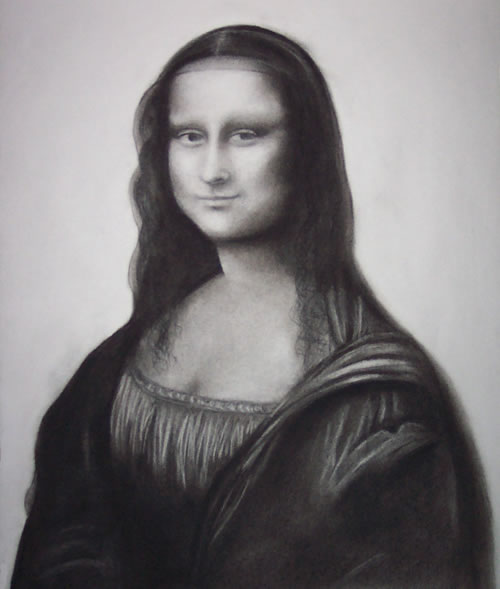
Larger version. There is already too much said and written about the Mona Lisa. All I will say is that the "smile" is very hard draw, as it is not really a smile: it's the shadow cast from the sitter's lips, and it appears to be different from different angles because it is a visual illusion--if you look at it directly, it is gone; if you let your peripheral vision see it, you catch a glimpse of the mystic smile that inspired many artists and inspired my drawing. If you look closer at my drawing, you'll notice that it has a certain resemblance to the Mona Lisa; however, it is not an exact rendition of her. This is due to the lack of drawing skills on my part. The Process I wanted to see the progress of the drawing throughout the process. Perhaps there is something to be learnt. The following series of pictures shows the transformation of a blank piece of paper (18" x 24" newsprint) into a complete drawing: 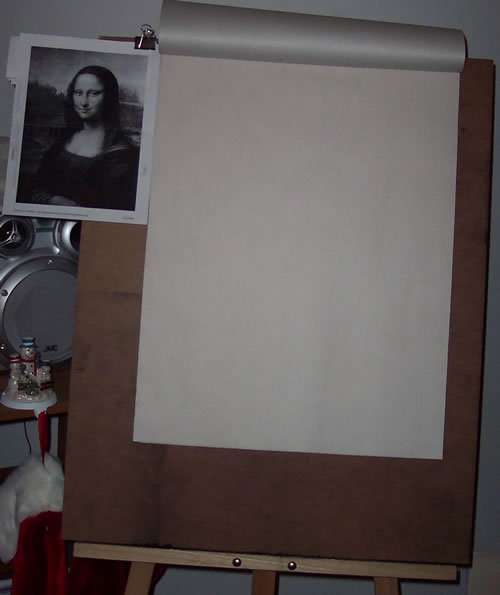
I had to get the basic shape and the proportions of the drawing. For that I use willow charcoal: 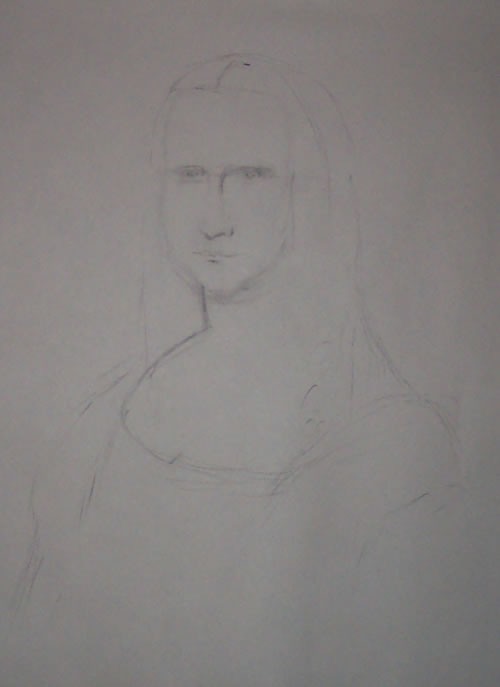
Once the basic shape is in place, I started adding some values to the face (using regular charcoal). It's hard to decide where to start, so I decided to start at the darkest side of the face: 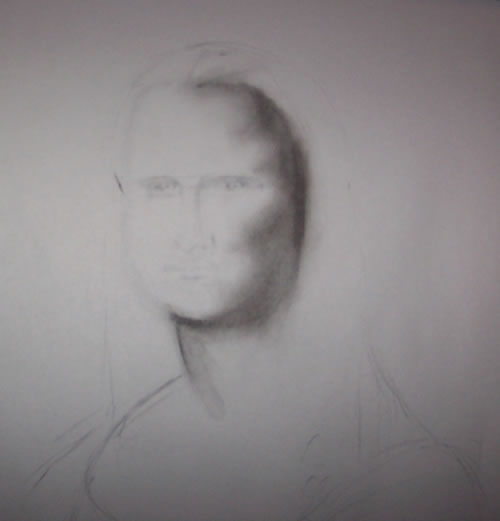
I continued adding some of the details of the face, such as the eyes, the nose, and the complete outline of the face: 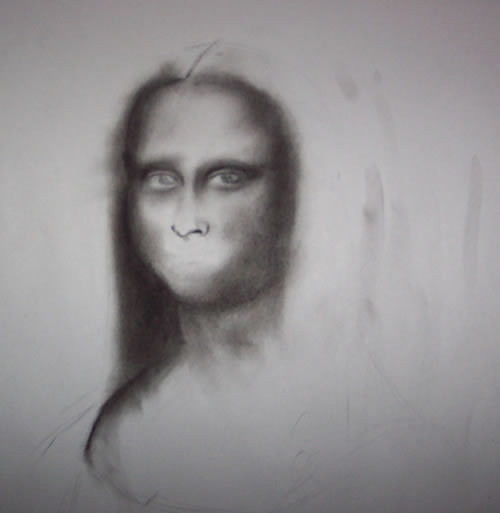
The face looked weird without the mouth, so the next logical step is the mouth. At this point, I had already fixed the size of the nose as it was too long. Note the smile coming through: 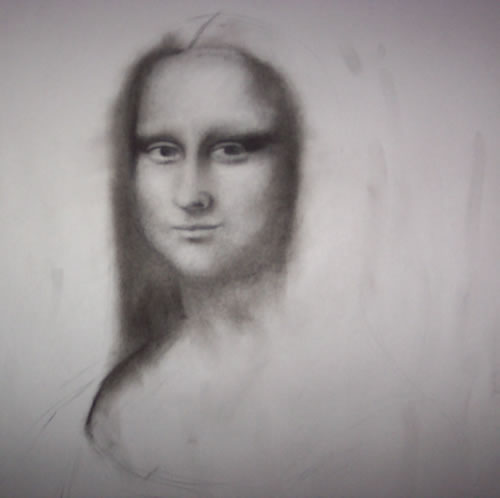
Not a lot changed here. I did change the size of the face a bit and kept working on the mouth. Note the size of the neck. It's too thick; something that I fixed in the next step: 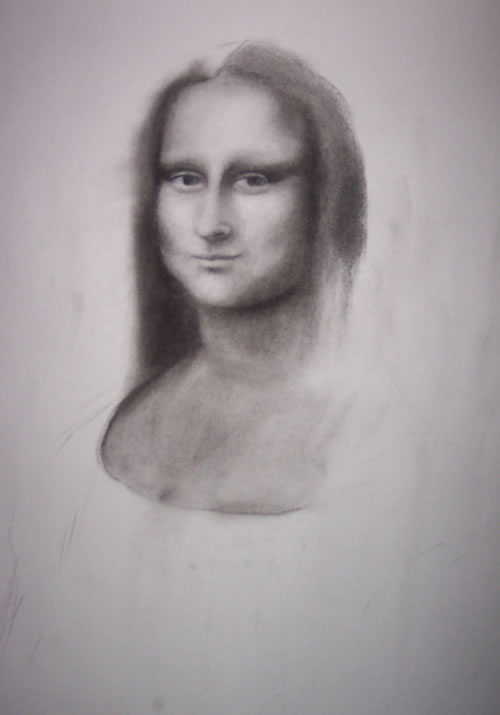
At this point, I already had enough of the face and I had to tackle the hair. If you noticed the previous drawings, they had no hair. I was putting it off until last, because I don't know how to draw hair. Also, I hadn't decided if I wanted to draw the dress. I stopped thinking about it (shutting off my logical side) and decided to give it a shot. The dress was another challenge in itself as the whole thing is covered by a thin transparent looking fabric--similar to the vale. It's really hard to see, but, I guess that's why they call it sfumato: 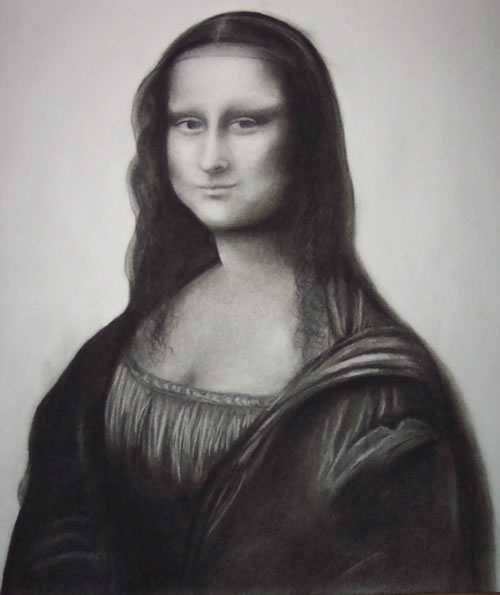
This next image, doesn't look different from the last - However, there is a big change: the smile - I had to fix it, as it looked too "hard." I had to soften the edges a bit - I think it may have worked: 
Random thoughts Since my drawing is an approximation of the original, I started thinking about pi - For some purposes 3 is good enough of an approximation. For others, 3.1415 is good enough. If you allow me an analogy, I think of my drawing is more of 3, rather than the true value of pi, which doesn't have a specific real number. So, the Mona Lisa, in my mind, is like pi: irrational and forever infinite. I think this analogy would work, even for a very talented artist. I.e., The more his or her drawing/painting resembles the the original painting, the more digits pi would have. Conspiracy theory During my research, I found this particular writer Rizah Kulenovic, who argues that the Mona Lisa is actually a portrait of Leonardo's mother. At the conclusion of his essay, he writes:
|
| Guestbook | ©
Jose Sandoval 2004-2009 jose@josesandoval.com |